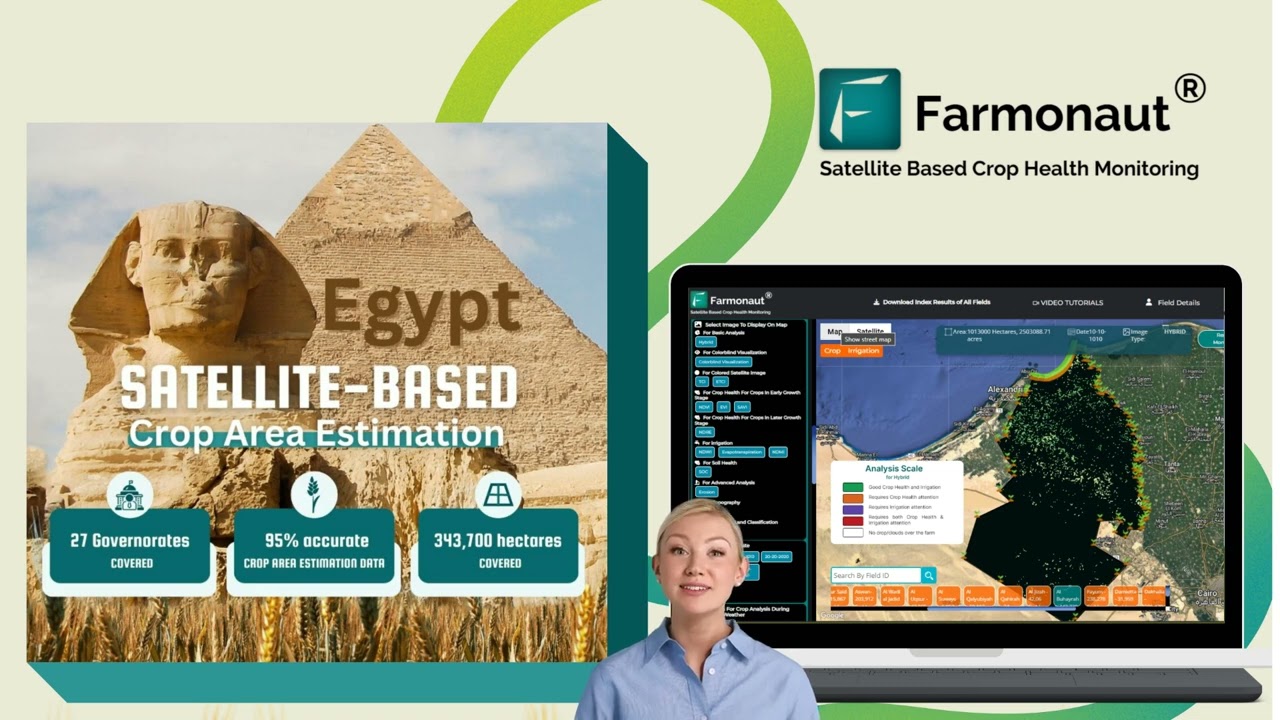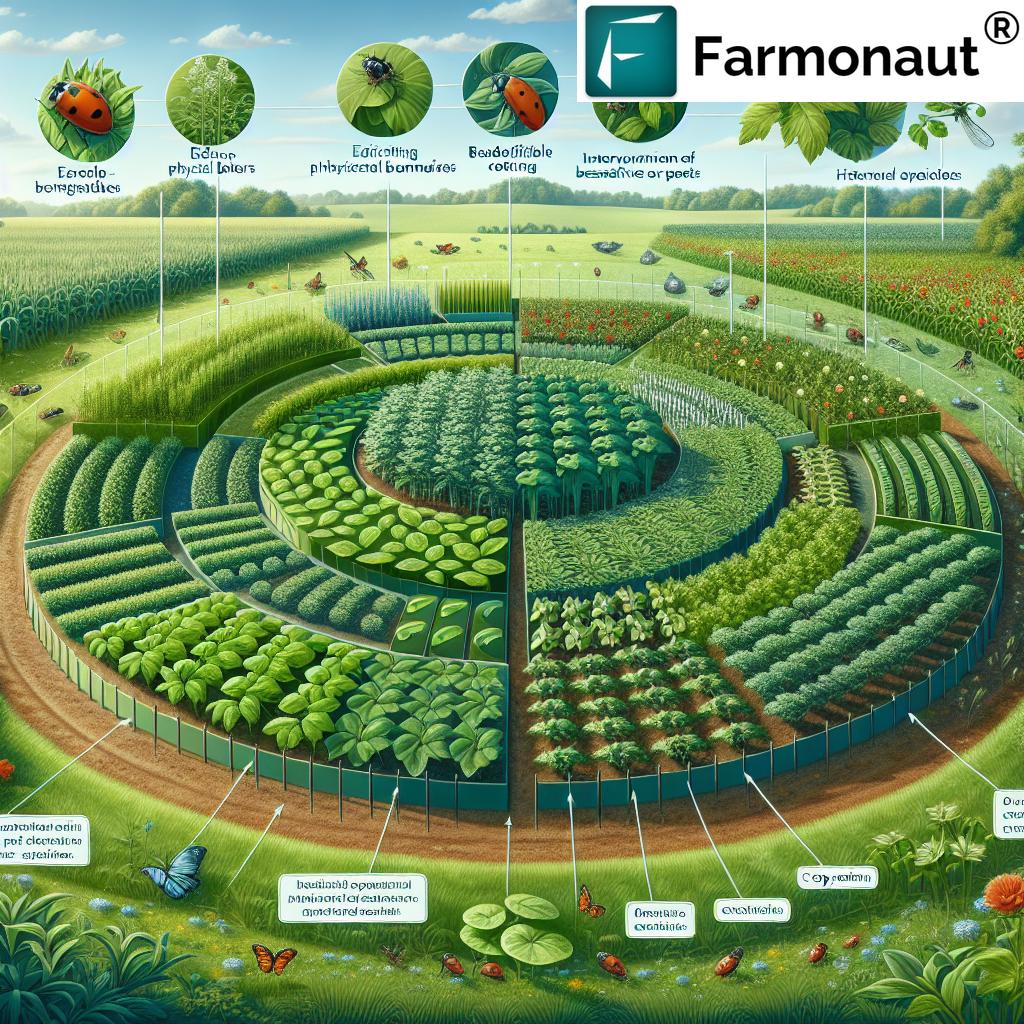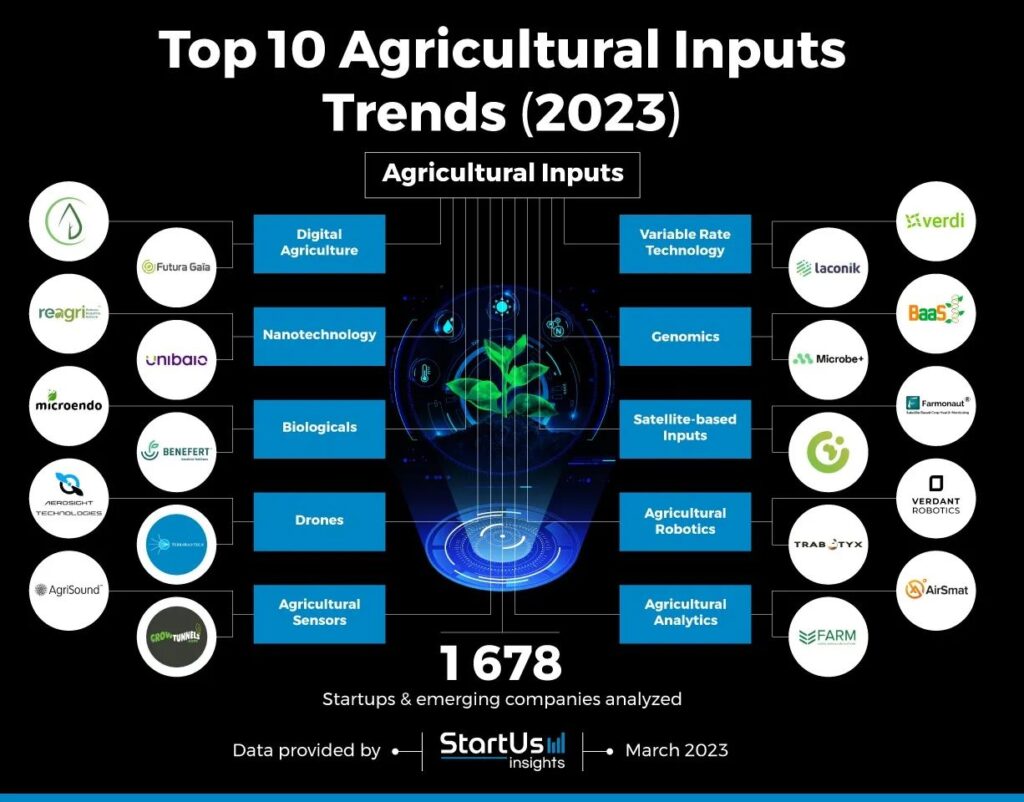What Are the Signs of Mealybug Infestation? Shocking Clues!
Table of Contents
- Introduction to Mealybug Infestation in Agriculture
- Understanding Mealybug Biology & Lifecycle
- Early Detection of Mealybugs: Why It Matters
- Key Signs of Mealybug Infestation on Plants
- Mealybug Damage to Plants: Effects on Health & Productivity
- Comparison Table: Signs, Severity, Impact & Management
- Sustainable Mealybug Management Strategies
- How Farmonaut Empowers Mealybug Control in Agriculture
- FAQ: Mealybug Infestation and Control
- Conclusion: Pathways to Healthy Crops & Resilient Farms
Introduction to Mealybug Infestation in Agriculture
In the realms of agriculture and forestry, mealybugs stand as one of the most significant pests threatening crops globally. These small, soft-bodied insects from the family Pseudococcidae often go unnoticed until they cause visible damage to plants through their relentless sap-sucking activities. As we strive for sustainable food and resource production, recognizing the early signs of mealybug infestation is crucial for maintaining healthy crops, optimizing productivity, and minimizing economic losses.
Our goal in this comprehensive guide is to walk you through the shocking clues that signal a mealybug problem, explain how to get rid of mealybugs using sustainable and science-backed methods, and showcase the role of innovative technologies like Farmonaut in modern mealybug control in agriculture.
Understanding Mealybug Biology & Lifecycle
To effectively manage mealybug infestations, we must first understand their biology and lifecycle. This equips us with knowledge for targeted and timely interventions.
Mealybug Identification: Recognizing the Family Pseudococcidae
-
Adult Female Mealybugs:
- Oval-shaped, measuring 1/20 to 1/5 inch (1.0–5.0 mm) in length.
- Covered with a white, waxy, powdery substance that gives a cottony appearance (cottony residue).
-
Males:
- Smaller, sometimes winged, and short-lived (existing primarily to fertilize females).
- May be mistaken for tiny gnats but do not feed on plants.
-
Nymphs (“Crawlers”):
- Juvenile stage; appear as mobile, yellow or tan specks, lacking the full waxy coating.
- They are susceptible to controls before forming the hardy wax barrier.
This unique appearance makes mealybugs relatively easy to identify if we know what to look for—especially when colonies become established on stems, the undersides of leaves, and in axils of agricultural and forestry plants.
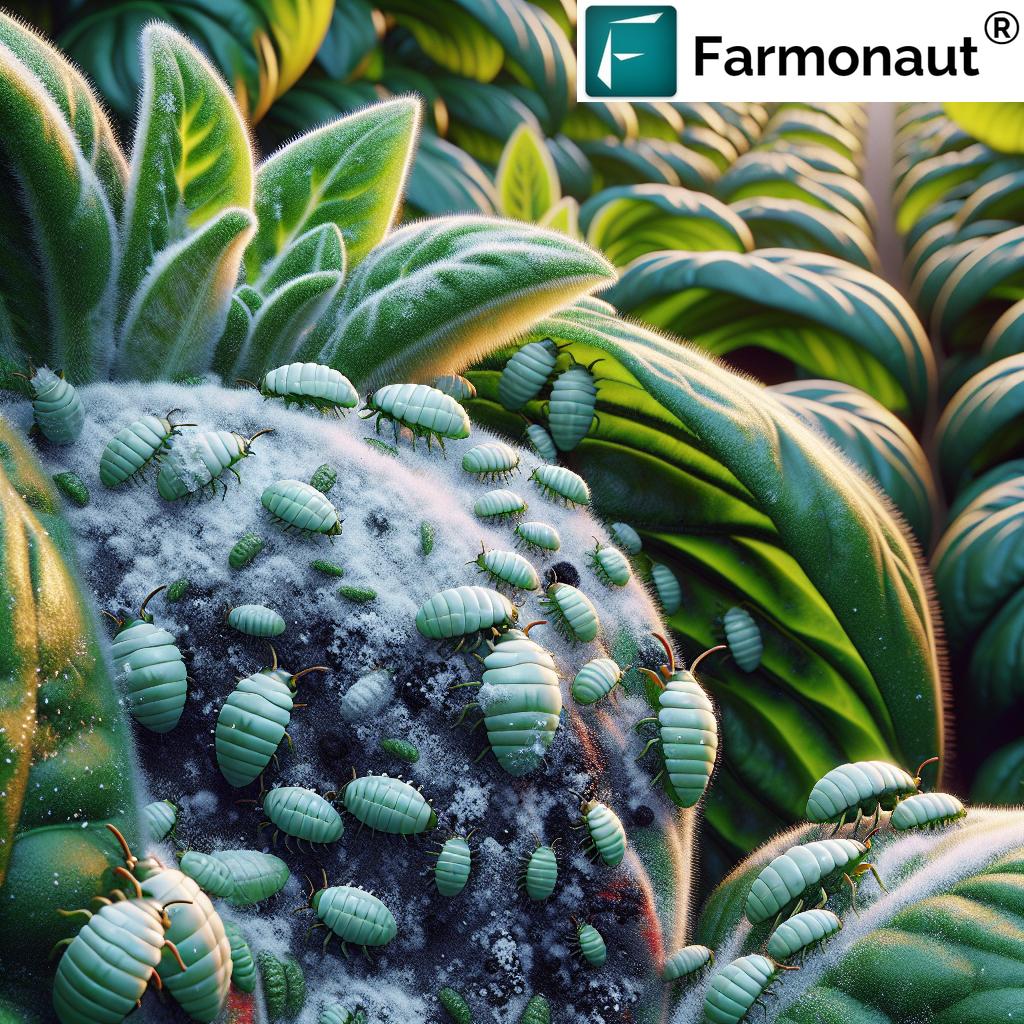
Above: White cottony clusters of mealybugs on stems and leaves – a classic infestation sign.
Early Detection of Mealybugs: Why It Matters
Early detection of mealybug infestation is absolutely crucial. Catching the pests before populations explode not only simplifies management but can also save over 40% in potential crop losses. These early clues allow us to respond swiftly, safeguarding crop health, productivity, and ecosystem balance.
- Infestation spreads fast: Each female can lay hundreds of eggs. Infestation tends to start in hidden places—leaf axils, beneath the foliage, or at the base of stems.
- Missed detection: If not checked, their numbers, honeydew, and associated sooty mold escalate damage quickly.
- Precision monitoring technologies: Tools like Farmonaut’s Farm Management Platform provide real-time AI- and satellite-based crop health alerts, facilitating early detection of mealybugs even across large-scale agricultural operations.
In practice, this means observing leaves, stems, and plant undersides carefully during routine checks and leveraging remote sensing for hidden or large-area infestations.
Key Signs of Mealybug Infestation on Plants
As we look for signs of mealybugs on plants, it is essential to arm ourselves with a checklist of physical and physiological clues. Mealybugs’ presence may manifest not only visually but also through subtle physiological symptoms that precede severe crop losses.
1. White, Powdery Cottony Residue
- The most definitive sign is the presence of cottony, white, waxy clusters on the undersides of leaves, along stems, and in leaf axils.
- These clusters are formed by groups of adult and juvenile mealybugs covered in their protective wax—a powdery substance produced as they feed.
- Appearance can range from scattered spots to dense matting, depending on the severity of infestation.
2. Sticky Honeydew Secretion
- Mealybugs excrete a sugary liquid called honeydew as they feed on plant sap. This sticky layer can coat leaves and stems, making the surface feel tacky.
- Honeydew is a direct byproduct of their feeding, creating an ideal medium for fungi and attracting ants.
3. Black Sooty Mold on Leaves
- Sooty mold on leaves appears as a black, powdery fungal growth thriving on the honeydew deposits.
- Sooty mold not only spoils crop marketability but also reduces photosynthesis by blocking sunlight, weakening the plant.
4. Yellowing, Wilting, and Premature Leaf Drop
- As mealybugs feed, they remove vital nutrients, causing leaves to yellow, wilt, and drop prematurely.
- Premature leaf loss further reduces the plant’s ability to capture sunlight and grow robustly.
5. Stunted Growth and Plant Deformation
- Persistent feeding leads to overall stunted growth, distorted leaves, and deformed or discolored fruit.
- Young, rapidly growing shoots are especially vulnerable, leading to visible malformations.
6. Increased Ant Activity
- Ants on plants can be an indirect clue—attracted by the sweet honeydew, ants protect mealybugs from predators, compounding the pest problem.
7. Crawlers and Eggs
- Upon close inspection with a hand lens, we may spot nymphs (crawlers) that are mobile but lack the full waxy coating. These are the dispersing phase of the pests and indicate an active, spreading infestation.
- Egg sacs appear as fluffy, white masses attached to plant tissue.
For technologically advanced monitoring, Farmonaut offers large-scale farm management solutions that use satellite and AI to detect crop health anomalies—an excellent method for early detection of mealybugs, especially across extensive agricultural and forestry areas.
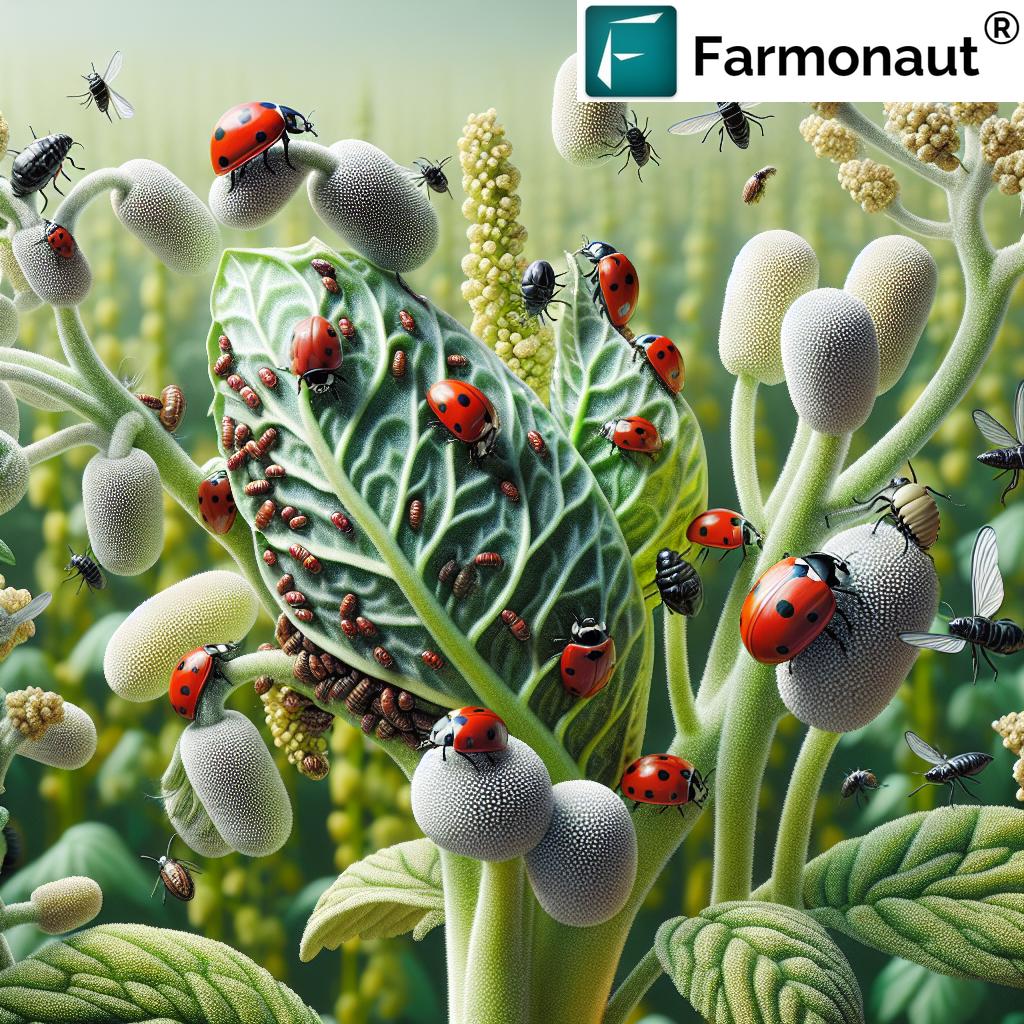
Above: Sooty mold, sticky honeydew, and leaf wilting – key visual symptoms in mealybug-affected agriculture.
Mealybug Damage to Plants: Effects on Health & Productivity
When mealybugs on crops are left unmanaged, the resulting consequences go beyond aesthetics. Let us explore their broader agricultural and ecological impacts:
- Reduced Photosynthesis: As sooty mold fungi develop on honeydew-coated leaves, plants struggle to photosynthesize, leading to impaired growth and vigor.
- Weakened Plant Vigor and Yield Loss: Persistent feeding weakens plant tissues, resulting in stunted plants and reduced yields. This can cause 10–70% estimated yield loss based on infestation severity and crop type.
- Transmission of Plant Viruses: Several mealybug species are responsible for transmitting plant viruses between crops, introducing another layer of complexity to farm management.
- Marketability: The visible blackening of leaves and deformation of fruits—along with premature leaf and fruit drop—renders produce unmarketable.
- Invasiveness in Forestry: Across forestry ecosystems, mealybug outbreaks can stress native flora, stunt young tree growth, and disrupt biodiversity through cascading pest pressures.
- Ants and Crop Health: The ant-mealybug relationship complicates management, as ants tend to mealybugs for honeydew and ward off their natural enemies.
Effective mealybug management is critical for reducing pest-induced losses, safeguarding crop quality, and maintaining resilient agricultural and forestry production systems.
Need financial protection against pest-induced yield drops? Explore Farmonaut’s real-time, satellite-enabled crop loan and insurance verification tools for risk reduction and transparency.
Comparison Table: Signs, Severity, Impact & Management
Quickly reference the primary signs of mealybug infestation, estimated severity, impact on crops, and recommended sustainable management actions. This table will help prioritize efforts for effective, environmentally conscious mealybug control strategies.
| Mealybug Sign | Estimated Severity Level | Possible Crop Impact (Yield Loss %) | Recommended Sustainable Management Practice |
|---|---|---|---|
| Cottony Residue / White Clusters | Low to Moderate | 5–15% (if unchecked) | Manual removal, enhance scouting, improve field sanitation |
| Sticky Honeydew on Plant Surfaces | Moderate | 10–30% | Neem oil, insecticidal soap, prune affected areas |
| Sooty Mold (Black Powdery Coating) | Moderate to High | 20–60% | Remove honeydew, promote air circulation, natural predators |
| Yellowing, Wilting, Premature Leaf Drop | High | 40–70% | Biological controls (e.g., ladybugs, lacewings), ant exclusion measures |
| Stunted Growth, Deformation, Fruit Drop | High | 50–70% | Monitor with remote sensing, intervene early, systemic insecticides if necessary |
| Increased Ant Presence | Moderate | Up to 30% (if ants protect mealybugs) | Disrupt ant trails, install sticky barriers, control ant colonies |
* Data is approximate and may vary with crop type, climatic conditions, and infestation stage.
Sustainable Mealybug Management Strategies
Sustainable management is at the core of healthy agriculture and forestry. Integrated pest management (IPM) approaches prioritize cultural, biological, and, where necessary, chemical measures to reduce mealybug populations while minimizing risks to beneficial insects, human health, and the environment.
1. Cultural Management
- Sanitation: Remove infested plant material, weeds, and fallen leaves promptly. Clean up crop residues that can harbor mealybugs through multiple life stages.
- Pruning and Mechanical Removal: Prune out heavily affected branches and dispose of them safely. Where practical, wash off mealybugs with a strong stream of water.
- Ant Exclusion: Install ant barriers (e.g., sticky bands) around trunk bases or implement ant control to break the ant-mealybug mutualism.
2. Biological Control (Harnessing Nature’s Allies)
- Natural Mealybug Predators: Introduce or encourage beneficial insects like ladybugs, lacewings, and parasitic wasps, which prey on mealybugs at various life stages.
- Promote Biodiversity: Maintain a diverse agro-ecosystem that supports natural enemy populations.
- Reduce Pesticide Use: Only use selective, targeted insecticides to preserve “good bugs” that feed on pests.
Farmonaut’s AI-driven advisory (Jeevn AI) can recommend biological management options tailored for your farm’s unique conditions.
3. Chemical Control (As a Last Resort)
- Insecticidal Soaps and Oils: Use soapy water or horticultural oils to smother crawlers and adult mealybugs. Spray thoroughly on undersides of leaves and in axils for best results.
- Systemic Insecticides: Apply as a targeted drench or spray during high pest activity. Rotate modes of action to avoid resistance.
- Insect Growth Regulators: Disrupt development/reproduction; suitable for severe or recurring outbreaks where biological and cultural options fail.
Always follow label instructions and evaluate efficacy to minimize collateral damage to non-target organisms and the environment.
4. Monitoring & Precision Technology for Ongoing Management
- Combine regular field scouting with satellite-based crop health monitoring tools (Farmonaut’s precision farm management) to catch signs of stress before damage becomes irreversible.
- Digital analytics can help forecast pest outbreaks, allocate resources for targeted intervention, and ensure judicious use of agrochemicals.
- Record and review pest control measures for adaptive management in future growing seasons.
Interested in agricultural traceability for pest mitigation and food safety? See how Farmonaut’s blockchain-based traceability platform enhances transparency at every supply chain stage.
Summary of Integrated Action Steps
- Scout fields frequently and act on early warning signs.
- Foster environmental conditions that favor natural mealybug predators.
- Apply chemical inputs only when absolutely necessary and justified by monitoring data.
- Keep records for continuous improvement of pest management strategies.
How Farmonaut Empowers Mealybug Control in Agriculture
At Farmonaut, we believe that precision agriculture and data-driven insights are game-changers in the fight against pests like mealybugs. Let’s summarize how our technology supports sustainable mealybug control in agriculture and forestry:
- Satellite-Based Crop Health Monitoring: Utilizing the power of multispectral satellite imaging and AI, farmers receive timely updates on crop health variations. This allows us to spot stress patterns caused by mealybug feeding before damage is visible on the ground.
- Jeevn AI Advisory System: Personalized, real-time guidance enables farms to optimize pest management tactics and timing. Our AI can recommend specific strategies for your plant type, pest pressure, and regional risk profile.
- Blockchain Traceability: Traceability from field to fork with blockchain helps verify that crops were protected and harvested sustainably, boosting market value and consumer trust.
- Resource and Fleet Management: Smart fleet and resource management helps large-scale farms efficiently allocate equipment and staff for timely pest monitoring and response, reducing labor costs.
- Real-time Resource Optimization: Whether for smallholders or corporate farms, Farmonaut’s scalable platform empowers all users to maximize yields, minimize input waste, and support regenerative farming goals.
- Environmental Sustainability: Innovations like carbon footprinting tools let users track and reduce environmental impact, a crucial goal for future-friendly agriculture.
- API Integrations: Custom solutions for developers and businesses via the Farmonaut API and developer documentation for tailored precision pest monitoring.
FAQ: Mealybug Infestation and Control
Q1. What are the first signs of mealybug infestation on crops?
The first signs often include small, cottony white clusters on leaves and stems, sticky honeydew on plant surfaces, and increased ant activity. As infestation progresses, black sooty mold, yellowing, wilting, and plant deformation may appear.
Q2. How can mealybugs be controlled without chemicals?
Natural mealybug predators like ladybugs and lacewings, field sanitation, mechanical removal, and controlling ants are all part of the sustainable toolkit for chemical-free mealybug management.
Q3. How do ants relate to mealybugs?
Ants are attracted to the honeydew produced by mealybugs and will defend the pests from their natural predators. Breaking up this relationship is a key part of integrated pest management.
Q4. What damage do mealybugs cause in forestry?
Mealybug feeding leads to stunting of young trees, dieback, premature leaf loss, and reduced vitality, thereby undermining forestry ecosystem health and biodiversity.
Q5. How does Farmonaut support early detection of mealybugs?
Farmonaut’s platform uses satellite and AI analysis for large-scale, real-time crop health monitoring, enabling farmers to detect infestation stress early—often before symptoms are visible to the naked eye.
Q6. Can mealybugs transmit plant viruses?
Yes, some mealybug species are vectors for damaging plant viruses, which can lead to devastating effects on both yield and crop quality.
Q7. Are all white powdery residues on leaves a sign of mealybugs?
Not always, but if the residue is accompanied by sticky surfaces, ants, stunted growth, or black sooty mold, mealybugs are likely involved. Detailed scouting confirms the diagnosis.
Conclusion: Pathways to Healthy Crops & Resilient Farms
Mealybugs are a formidable threat for farmers and foresters globally, but their infestations can be managed effectively using a combination of early detection, integrated pest management, and precision agriculture technologies. By identifying cottony residues, sticky honeydew, sooty mold, yellow leaves, and stunted growth early, we safeguard the health of our plants and the broader agricultural ecosystem.
As we look forward, data-driven decision-making—empowered by platforms like Farmonaut—will become central to the sustainable management of pests and the optimization of yields. We invite all stakeholders—from smallholder growers to agricultural enterprises and forestry managers—to leverage these advanced tools, building resilience and prosperity for generations to come.






